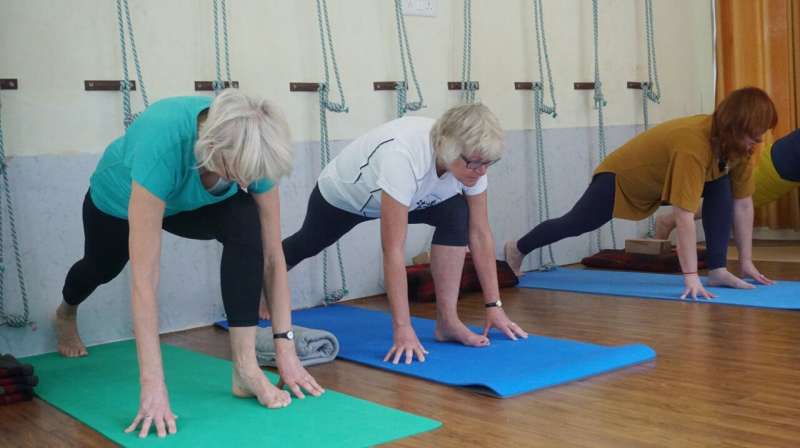Exercise and diet reaffirmed as key to healthy aging

While many people are aware humans typically lose strength and mobility as they age, fewer realize this is not inevitable and can largely be prevented by diet and appropriate exercise.
Geriatrician and current Ph.D. researcher Dr. Jesse Zanker from the University of Melbourne says this age-related loss of strength and mobility is known as sarcopenia in which, from about the age of 30, muscles begin losing their youthful bulk.
“In older age this can have serious impacts on a person’s ability to remain independent and engage in meaningful activities,” he says.
“With targeted action, however, loss of muscle and its negative outcomes can be delayed, prevented and even reversed.”
Co-researcher Victoria University’s Professor Alan Hayes from the Institute for Health and Sport said “there are many reasons that people can lose muscle, such as inactivity and hospitalization, which exacerbates losses seen with aging. Muscles can respond at any age, but waiting until there are difficulties with simple activities of daily living is too late.”
While establishing clear guidelines for diagnosing sarcopenia are important, it was pleasing to see that clinicians, researchers and consumers agreed that exercise and diet are the cornerstone of healthy aging.
But knowledge of Sarcopenia remains low among both public and health professionals alike.
There are numerous causes of sarcopenia, with age being the most common. Inflammation as we age, is thought to play a key role. Illness, such as COVID-19 or influenza infection, can also speed up muscle loss.
So what can we do about it?
Dr. Zanker, at the 2020 the annual meeting of the Australian and New Zealand Society for Sarcopenia and Frailty Research, recognized that sarcopenia knowledge and action remain poor.
Over two years, they sought opinions from people living with sarcopenia and their caregivers (“consumer experts”), and clinicians and researchers (“topic experts”), to develop comprehensive guidelines for sarcopenia prevention and management in Australia and New Zealand. These guidelines were published in the Journal of Cachexia, Sarcopenia and Muscle in November 2022.
“Experts unanimously agreed with the evidence that the key approach to sarcopenia is simple—exercise and diet. Despite progress in medical research and the particular focus of drug companies targeting chronic diseases of older age, a prescription of exercise remains the gold standard,” Dr. Zanker says.
“But not just any exercise. While walking is the most common form of exercise and is good for our physical, emotional and social health, walking on its own doesn’t reduce our risk of falls or reverse sarcopenia. The key to sarcopenia treatment is known as progressive resistance training (PRT), which involves a gradual, repeated, and targeted increase in weight or ‘resistance’ over time.”
A healthy diet includes adequate protein and calorie intake; the building blocks and fuel to optimize the effects of PRT. With the support of a doctor and allied health professionals (such as exercise physiologists, physiotherapists and dietitians), publicly funded exercise and diet plans can be developed that match consumer preferences.
Dr. Zanker reports that in their study, consumer experts shared different opinions from topic experts on their preferred duration of an exercise consultation, where they’d like to undertake exercise, and what outcomes were most important them.
For example, the mental health impacts of sarcopenia were reported to be of greater concern than reduced ability to perform household tasks. This led topic experts to reflect on why sarcopenia remains largely unknown in the public sphere. The answer being that until now experts haven’t been seeking the input of people living with it.
Dr. Zanker recommends anyone concerned about sarcopenia should speak with their health provider and get moving.
Source: Read Full Article



